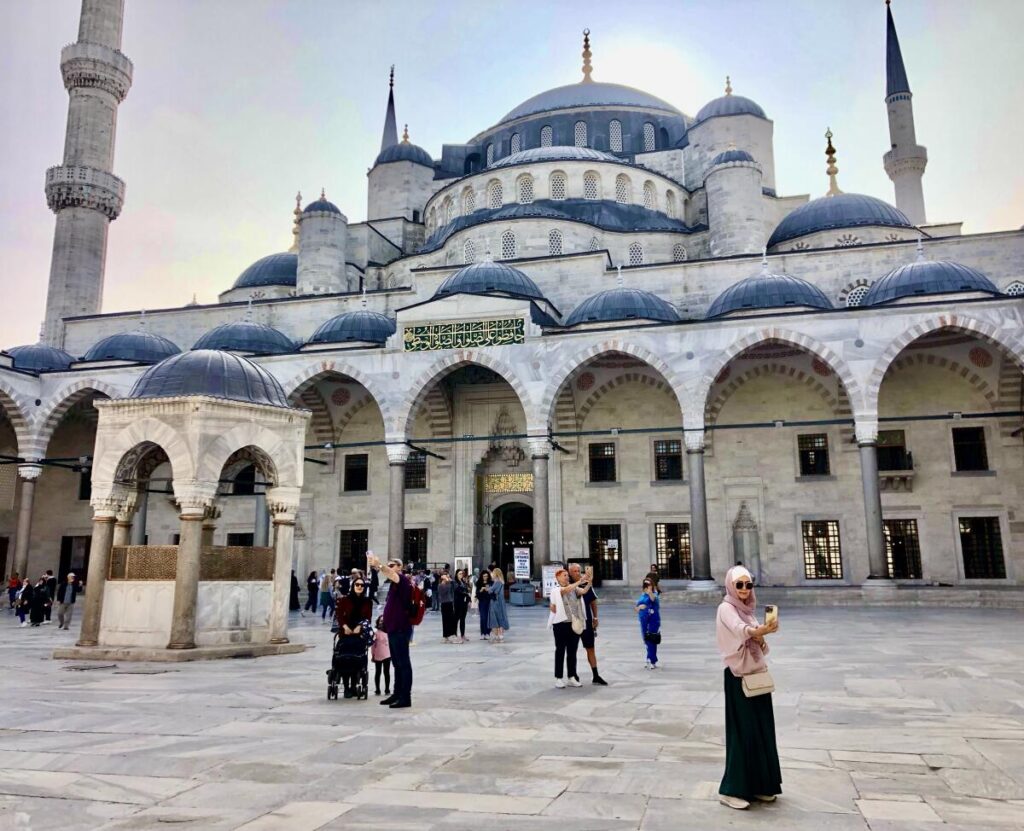Turkey, rich in history and boasting numerous archaeological sites, is sometimes described as a giant open-air museum.
The legendary city of Troy and the ancient Greek and Roman settlement of Ephesus are just a few of the many open-air ruins of an empire that stretched across the crossroads of Europe and Asia.
Along Turkey’s “Turquoise Coast” bordering the azure waters of the Aegean Sea is also the little-known and mysterious Lycian culture, which flourished over 2,500 years ago and left impressive rock tombs in the cliff sides that can still be visited today.
My wife and I have always loved cycling, so last October we signed up for a week-long boat trip along the Lycian coast, cycling every day while visiting ancient ruins and quiet coastal and mountain towns.
Before setting off on our boat and bike tour, we spent three days in Istanbul, taking in the sights and sounds of a city bustling with 15 million residents and dotted with minarets and mosques, including the world-famous Hagia Sophia, as well as the fascinating Topkapi Palace, home to the Sultan’s harem, Islamic holy objects and a dazzling collection of emerald and diamond jewels.
Conclude your trip to Turkey with a rental car and an adventurous drive to Ephesus, a city filled with well-preserved stone buildings and rich history, and the site of Alexander the Great’s triumphant entry into the city in 334 BC after defeating the Persian army.
Three centuries later, the Roman general Mark Antony and his wife, Queen of Egypt Cleopatra, were in Ephesus with a fleet of over 500 ships preparing for a naval battle, but they were defeated by their rival, the Roman general Octavian, who went on to become emperor.
Ephesus is also home to the Temple of Artemis, the fertility goddess, one of the Seven Wonders of the Ancient World – today, only a single column remains of the once magnificent structure.
Ephesus was also an important center of early Christianity – it’s where the apostle Paul lived and began spreading the gospel in Asia – and it’s one of the cities mentioned in the Bible’s Book of Revelation.
According to a legend that first circulated in the fourth century, Mary, the mother of Jesus, may have spent the last few years of her life in Ephesus, and we saw a line of buses dropping off tourists at a small mountain chapel dedicated to the Virgin Mary, which has been visited by three popes in recent years.
Devotees fill empty bottles with water that seeps from an adjacent cave, consider it blessed, and leave scribbled notes praying for Mary’s intercession for the cure of sickness and other ailments.
“Ephesus is amazing. Every time you go you see something different,” said Santa Rosa resident Sandy Meadows, who last visited in October 2022. “It’s so intact … you get to see another life, another time.”
Meadows, a travel advisor and tour leader, said it was especially rewarding to take an 80-year-old woman to the nearby Virgin Mary House: “It was her dream to go there,” and when the woman arrived, “she literally broke down in tears in our arms. It was like a miracle for her. It meant so much to her.”
Meadows also thoroughly enjoyed seeing the Library of Celsus in Ephesus, an architectural marvel believed to be the third largest library in the Greek and Roman Empires.
Its 12,000 scrolls embodied Roman values of sharing knowledge and promoting literacy.
The vast and well-preserved ruins of Ephesus include terraced Roman villas and baths, mosaics, frescoes, marble streets, remains of temples and marketplaces, a frieze of Nike, the goddess of victory, and an imposing stone gate dedicated to the Emperor Augustus.
It has a huge amphitheatre with a capacity of 25,000 people, originally used for theatre productions and then, during the Roman period, as a venue for gladiator fights.
On the same trip, Meadows’ cruise ship also docked in Istanbul, where she admitted she was disappointed by the heat and the crowds trying to get into the attractions. “I was a tour leader with 65 passengers,” she said. “It wasn’t the experience I was hoping for.”
She said her group had a great time listening to an interactive belly dancer perform at a reserved restaurant.
When my wife and I visited last October, we found the crowds relatively manageable, although we did have to queue at the Blue Mosque, a renowned masterpiece of Ottoman architecture, and at the ancient Hagia Sophia, a magnificent church built in the 6th century that originally served as a Christian Orthodox cathedral.
After the Muslim conquest in the mid-1400s, it was converted into a mosque.
When Istanbul was known as Constantinople, the capital of the Eastern Roman Empire, five Catholic emperors were crowned in Hagia Sophia.


